Volume 22, Issue 3

Regional Overview
September — December 2020Multilateralism (Still) Matters in/to Asia
The last trimester of the year saw its usual flurry of (albeit virtual) multilateral summitry, with most coming after the US election. While outgoing US President Donald Trump did “attend” the Asia Pacific Economic Cooperation (APEC) Leaders Meeting (for the first time since 2017), he was, as usual, a no-show at the ASEAN-chaired gatherings, with the US being represented at the US-ASEAN Summit and at the more important (at least to the other participants) East Asia Summit, for the second straight year, by National Security Advisor Robert O’Brien. Secretary of State Mike Pompeo did attend, in person, the Quad Foreign Ministers’ Meeting in Tokyo in October, with the four navies meeting later in the year for their first four-way exercise in India. Pompeo also attended (virtually) the US-ASEAN Ministerial but left the participation in the broader-based ASEAN Regional Forum to Deputy Secretary of State Steve Biegun.

US - Japan
September — December 2020Leadership Transitions in Tokyo and Washington
2020 brought a global pandemic, economic strain, and, in both the United States and Japan, leadership transitions. COVID-19 came in waves, smaller to be sure in Japan than in the United States, and each wave intensified public scrutiny of government. Neither Tokyo nor Washington held up well. Public opinion continued to swing against President Donald Trump, increasing his disapproval rating from 50% in January to 57% in December following the US presidential election. Prime Minister Abe Shinzo also suffered a loss of confidence. His disapproval rating grew from 40% in January to 50% in July, cementing his decision to step down on Aug. 28, ostensibly for health reasons.

US - China
September — December 2020Joe Biden is Elected President Amid a Plummeting US-China Relationship
In the final months of 2020, the Trump administration took a dizzying number of measures aimed at accelerating economic decoupling, curtailing Chinese Communist Party influence activities in the US, punishing Beijing for undermining Hong Kong’s autonomy and carrying out human rights abuses in Xinjiang, and strengthening ties with Taiwan. The US even attempted to ban TikTok and WeChat from the US market. China took its time, but finally congratulated Joe Biden and Kamala Harris on their victory in the US presidential election. Both the US and China launched their COVID-19 vaccination campaigns. A new dialogue was launched between US and Chinese militaries on crisis communications, but the PLA later refused to attend an annual meeting of a longstanding mechanism on operational maritime safety.
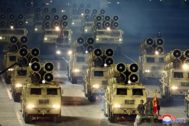
US - Korea
September — December 2020Resetting Relations Will Require True Grit
After a months-long wait to see who would lead the US from 2021, both South and North Korea got an answer in November: Joe Biden. South Korea moved to forge ties with the incoming US administration, relieved at the prospect of a more conventional White House, yet anxious for it to adopt an approach to North Korea congruent with that of the Blue House. North Korea has stayed mum on Biden’s victory, reflecting its poor relations with the former vice president, a pause to recalibrate diplomatic expectations, and domestic issues that overshadow foreign policy in Pyongyang. The latter point is fitting, as it is also true of Washington. The early days of the Biden presidency will see domestic focus due to the COVID-19 pandemic and vaccine rollout, economic recovery, and the need to try to heal political and cultural divisions in the United States. That said, neither Korea can be neglected for long.

US - Southeast Asia
September — December 2020Waiting on Washington: Hopes for a Post-Election Boost in Us Relations
The resurgent COVID-19 pandemic and US elections constrained the conduct of US relations with Southeast Asia and of regional affairs more broadly in the final months of 2020. Major conclaves were again “virtual,” including the ASEAN Regional Forum, the East Asia Summit. and the APEC meeting. Over the year, ASEAN lost considerable momentum because of the pandemic, but managed to oversee completion of the Regional Comprehensive Economic Partnership (RCEP) in November. Some modest gains in US-Southeast Asian relations were realized, most notably extension of the US-Philippines Visiting Forces Agreement (VFA) for another six months, an opportunity for Manila and the new administration in Washington to put the VFA—and the US-Philippines alliance more broadly—on firmer ground. Another significant step, albeit a more controversial one, was the under-the-radar visit to Washington of Indonesian Defense Minister, Prabowo Subianto, in October.
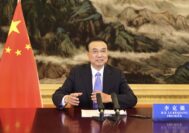
China - Southeast Asia
September — December 2020Beijing Hails Regional Integration, US Seen Sidelined
China faced a less forceful US posture in the South China Sea in this reporting period compared with earlier in 2020. Beijing took advantage of President Trump’s failure to participate in the East Asian Summit (EAS) and other ASEAN-led meetings in November. Chinese leaders depicted the United States as disruptive and out of step with what Beijing saw as an overriding trend toward regional economic integration and cooperation. They highlighted the Regional Comprehensive Economic Partnership (RCEP) agreement and ASEAN’s new prominence as China’s top trading partner, forecasting stronger regional economic growth led by China’s rapid rebound from the COVID-19 pandemic. Beijing remained on guard against US challenges, and it resorted to unprecedented trade retaliation and related diplomatic pressures to compel Canberra to change its recent moves to check Chinese interference in domestic Australian affairs, expansionism in the South China Sea, repression in Hong Kong and Xinjiang, and malfeasance in the initial handling of the COVID-19 outbreak in China. Some experts were optimistic that the Philippines and China were on the verge of agreeing on joint exploitation of oil and gas in South China Sea areas claimed by both countries, but others remained skeptical.
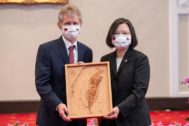
China - Taiwan
September — December 2020Overcoming COVID-19, Navigating US–China Tensions, and Anxiously Awaiting a New US Administration
Taiwan’s successful management of COVID-19 infections and the pandemic’s economic impact has elevated Taiwan’s international profile and President Tsai Ing-wen’s already high domestic approval ratings, but did little to ameliorate Taiwan’s confrontation with mainland China. Growing US–China economic and security tensions have continued to swirl around the island. Chinese air and naval forces have increased intimidation operations around Taiwan, with the Chinese media threatening that People’s Liberation Army (PLA) aircraft might even overfly the island. Taiwan has committed to increasing its defense budget and upgrading its reserve forces, and the US approved a series of military sales that are more closely aligned with Taipei’s porcupine strategy than some earlier high-profile sales. Taiwan’s IT companies have struggled to preserve their production base in China, while assuring the US that they would not contribute technology to US-sanctioned Chinese companies. They also opened facilities in third countries and the US in order to ensure US market access and political support.
Tsai’s decision in late August to allow imports of US pork treated with ractopamine was intended to reopen negotiations with the US on a bilateral trade agreement and it was driven by a strategic calculation that closer economic ties with the US would advance the island’s economy and security. That move caused a storm of domestic opposition, led by the Kuomintang (KMT) but with no response from the US Trade Representative, a combination that risks undermining the initial successes of her second term in office. The election of Joe Biden caused anxiety in Taiwan that the new Democratic administration, in an effort to reduce tensions with China, might be less supportive of Taiwan than President Trump has been.
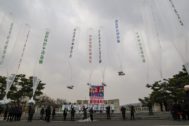
North Korea - South Korea
September — December 2020Fire on the Sea, No Balloons in the Sky
Inter-Korean relations, still formally in abeyance, were dominated in September and October by a mysterious and tragic incident in the West Sea. A Southern official went missing from a survey vessel and ended up in Northern waters—where he was shot and his body burnt. Kim Jong Un apologized, sort of, and Seoul revealed that he and Moon Jae-in had earlier privately exchanged pleasantries—but neither this, nor Unification Minister Lee In-young’s ceaseless calls for aid and cooperation, cut any ice in Pyongyang. Meanwhile Kim launched a campaign to eradicate Southern slang among Northern youth. In December Moon’s ruling party passed a law to ban propaganda balloon launches across the DMZ, prompting widespread criticism but earning no praise from the North. At a big Party Congress in January, Kim lambasted the South in shopworn terms, withdrew his “goodwill,” and said the ball is in Seoul’s court. For good measure, his sister Kim Yo Jong called South Korea “weird.” Despite Moon’s dreams, the 2018 peace process is over, with scant prospects of renewal.
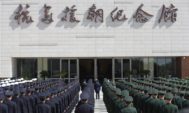
China - Korea
September — December 2020Strategic Dilemmas, Clashing Identities, and Free Trade
PRC State Councilor and Foreign Minister Wang Yi’s November visit to Seoul produced limited substantive results while signaling Beijing’s deeper strategic intentions toward the United States’ Asian allies. China’s commemorations of the Korean War’s 70th anniversary in October provided reassurances to North Korea while triggering a war of words with South Koreans, ranging from the foreign ministry to the K-pop group BTS. On social media, the history controversy was a prelude to wider cultural clashes on a host of issues. While the repercussions of COVID-19 and US-China trade tensions challenge China and South Korea’s economic agenda, the Regional Comprehensive Economic Partnership’s signing in November raised prospects for regional multilateralism. Meanwhile, North Korea’s self-imposed quarantine resulted in a precipitous drop in North Korean imports from China according to China’s official trade statistics. UN Panel of Experts-led monitoring of North Korean off-the-books exports of coal and sand to China drew harsh US criticisms and catalyzed the announcement of a US Treasury-administered rewards program for reporting on primarily Chinese entities engaged in illicit trade with North Korea. Coupled with the incoming Biden administration’s envisioned regional architecture and the campaign’s declared reliance on multilateral approaches to North Korea, Asia’s multilateral initiatives may heighten Seoul’s US-China dilemma.

Japan - China
September — December 2020Treading Water
Perhaps the biggest news of the last third of 2020 was that Xi Jinping’s often-postponed state visit to Japan will not take place in spring 2021 and may be postponed to September 2022, in commemoration of the 50th anniversary of the normalization of China-Japan diplomatic relations. Both countries’ economies recovered well from the pandemic, with robust trade between them even as they continued to snipe at each other politically and upgrade their military capabilities. China continued to expand its presence in waters of the East China Sea claimed by Japan.
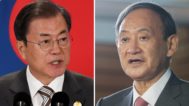
Japan - Korea
September — December 2020A New Leader in Japan and Uncertain Future Scenarios
The inauguration of Suga Yoshihide as Japan’s prime minister in September 2020 did not lead to a breakthrough in the stalled Japan-South Korea relationship. However, it provided an opportunity for South Korea to signal that President Moon Jae-in would be interested in a summit meeting with Suga. In the final months of 2020, it became apparent that both governments in Seoul and Tokyo felt the need to improve bilateral ties, but had not yet found a way to make that happen.

China - Russia
September — December 2020Light at the End of the Tunnel?
The end of 2020 may well be an “end-of-history” moment for a world riddled with disease, death, despair, and de-linkage. Despite huge differences in how Russia and China coped with these challenges, bilateral cooperation in a variety of areas (SCO, COVID-19, response to the US-led Indo-Pacific strategy, etc.) were sustained and even enhanced in the last months of 2020. A salient factor was Washington’s dual-adversary undertaking, which pushed Moscow and Beijing toward deeper and broader strategic coordination. The post-election instability also cast a long shadow over US domestic and foreign policies. As 2020 drew to a close, Beijing and Moscow stepped up their strategic coordination for a possible resetting of relations with the Biden administration, or perhaps even a Biden moment, thanks to Trump’s legacy.
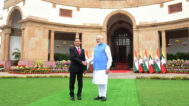
India - East Asia
January — December 2020India-East Asia Relations: Acting Across the Indo-Pacific, Actually and Virtually
Despite the COVID-19 global pandemic, India’s engagement with East Asia during 2020 remained reasonably active, both actually and virtually. India’s external affairs minister, S. Jaishankar, took several opportunities to emphasize that the Indo-Pacific concept (i.e., the inclusion of India and the Indian Ocean region) has gained wider acceptance. In his opening remarks at the 2nd Quad Ministerial Meeting, for example, he said “[i]t is a matter of satisfaction that the Indo-Pacific concept has gained increasingly wider acceptance.” And he also repeatedly highlighted India’s commitment to the concept, saying “The Indo-Pacific Ocean’s Initiative that [India] tabled at the East Asia Summit [in 2019] is a development with considerable promise in that context.” He pointedly highlighted India’s actions at the frontier of the western Pacific, telling an Indonesia-Australia convened town hall that “[i]t is revealing that in the midst of a global health crisis, Indian diplomacy has actually put its Indo-Pacific approach into practice. We provided assistance to Solomon Islands, Nauru, Papua New Guinea, Kiribati, Tonga, Tuvalu and Palau for procurement of medical equipment and supplies to assist in their response to COVID-19.” However, on two major counts—the decision by most regional countries to sign the Regional Comprehensive Economic Partnership agreement (RCEP) without India (which had dropped out of the negotiations last year) and the confrontation-filled Sino-India relationship—India’s East Asian relations were complicated rather than positive. Brighter spots included progress on the “Quad Consultations” (US, Japan, Australia, and India) and concomitant steady progress in bilateral security ties to Japan and Australia.